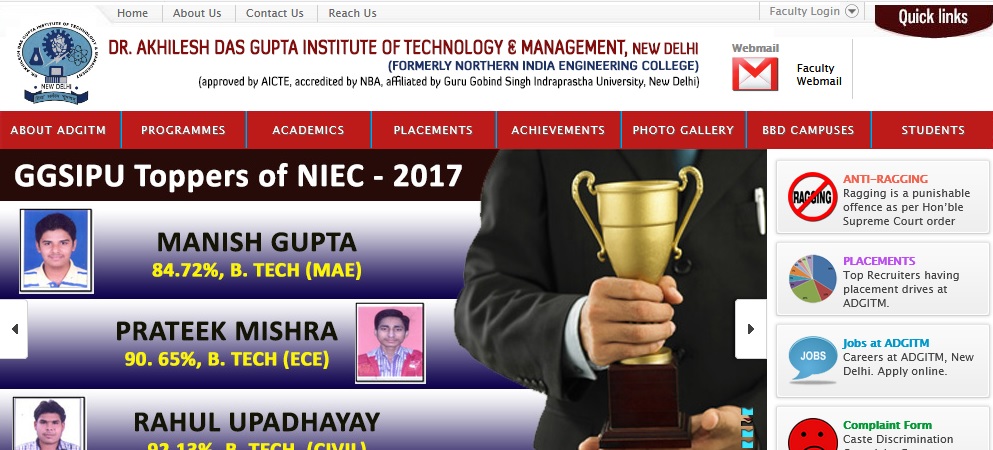LAN & Networking B.Tech Question Bank : niecdelhi.ac.in
Name of the College : Northern India Engineering College
University : Guru Gobind Singh Indraprastha University
Subject Code/Name : LAN & Networking
Dept : Mechanical & Automation Engineering
Degree : Bachelor of Technology
Sem: IV
Website : niecdelhi.ac.in
Document Type : Question Bank
Download Model/Sample Question Paper : https://www.pdfquestion.in/uploads/niecdelhi.ac.in/3359-_uploads_assignments_btech_1sem_LAN%20paper%202.pdf
NIEC Delhi LAN & Networking Question Paper
Sample Question Paper :
Note: Attempt five Questions in all, Q.No. 1 is compulsory.
Q. 1. a). What is the use of Application layer in OSI Model. 2.5 X10
b) Explain Internet.
c). Differentiate between ALOHA and CSMA.
d). Explain Gigabit Ethernet.
e) Differentiate between hub and switch.
f) Explain Cryptography.
g) What is p-CSMA ?
h) What is encryption and decryption?
i) What is ISDN?
j)What is DNS?

Q. 2. Explain TCP/IP Model in detail. 12.5
Q 3. a) Differentiate between Twisted pair, coaxial cable and fiber optics. 6.5
b) Explain CSMA/ CD protocol in detail. 6
Q4. What is Ethernet ? Explain all 3 types of Ethernet in detail . 12.5
Q. 5. Write short notes on: a) DSL 4 b)HTTP 4 c) SMTP, POP 4.5
Answers
Ans :
1. a) In the Internet model, the application layer is an abstraction layer reserved for communications protocols and methods designed for process-to-process communications across an Internet Protocol (IP) computer network. Application layer protocols use the underlying transport layer protocols to establish process-to-process connections via ports. In the OSI model, the definition of its application layer is narrower in scope. The OSI model defines the application layer as being the user interface – responsible for displaying the information received to the user. The OSI application layer is responsible for displaying data and images to the user in a human-recognizable format and to interface with the presentation layer below it. OSI separates functionality above the transport layer at two additional levels, the session layer and the presentation layer, specifying strict modular separation of functionality at these layers. It also provides protocol implementations for each layer.
b) The Internet is a global system of interconnected computer networks that use the standard Internet protocol suite(TCP/IP) to link several billion devices worldwide. It is a network of networks that consists of millions of private, public, academic, business, and government networks, of local to global scope, that are linked by a broad array of electronic, wireless, and optical networking technologies. The Internet carries an extensive range of information resources and services, such as the inter-linked hypertext documents and applications of the World Wide Web (WWW), theinfrastructure to support email, and peer-to-peer networks for file sharing and telephony.
c) Aloha Protocol As mentioned earlier, Aloha is a simple communication protocol where each source in the network transmits data whenever it has a frame to be transmitted. If the frame is transmitted successfully, the next frame will be transmitted. If the transmission is failed, the source will send the same frame again. Aloha works well with wireless broadcast systems or half-duplex two-way links. But when the network becomes more complex, such as an Ethernet with multiple sources and destinations that uses a common data path, problems occur due to colliding of data frames. When the communication volume increases, the collision problem becomes worse. This can reduce the efficiency of a network since colliding frames will cause loss of data in both the frames. Slotted Aloha is an improvement to the original Aloha protocol, where discrete time slots were introduced to increase the maximum throughput while reducing collisions. This is achieved by allowing sources to transmit only at the beginning of a timeslot.